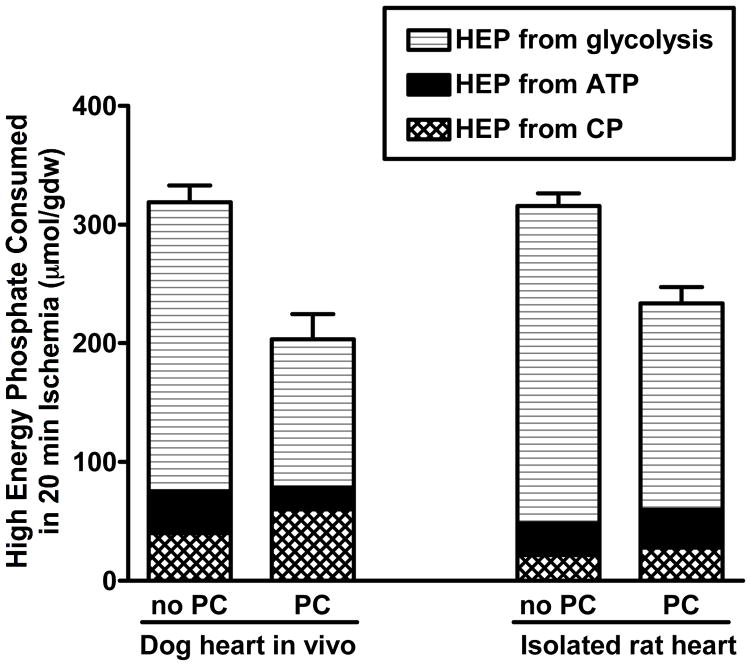Figure 1.
Total amount of high-energy phosphate consumed in severely or totally ischemic myocardium during 20 minutes of ischemia. The total amount of high energy phosphate consumed is equal to the amount of ATP produced by anaerobic glycolysis and the amount of high energy phosphate that is derived from tissue reserves of ATP and creatine phosphate. For this calculation, it was assumed that the flux through anaerobic glycolysis is equal to the change in tissue lactate and that the lactate came from glycogen, which yield 1.5 high-energy phosphates per lactate. Creatine phosphate breakdown yields 1 high energy phosphate, ATP yields 2, and ADP yields 1. This calculation is described in more detail in Murry et al1, and the data for the dog heart is taken from the same source. Data for the isolated rat heart was obtained from analysis of tissue extracts, using the same assays as for the dog heart. For both the dog and rat experiments, preconditioning consisted of 4 cycles of 5 minutes of ischemia and 5 minutes of reperfusion.

